Laboratories
Satellite Electronics and FPGA Systems Laboratory
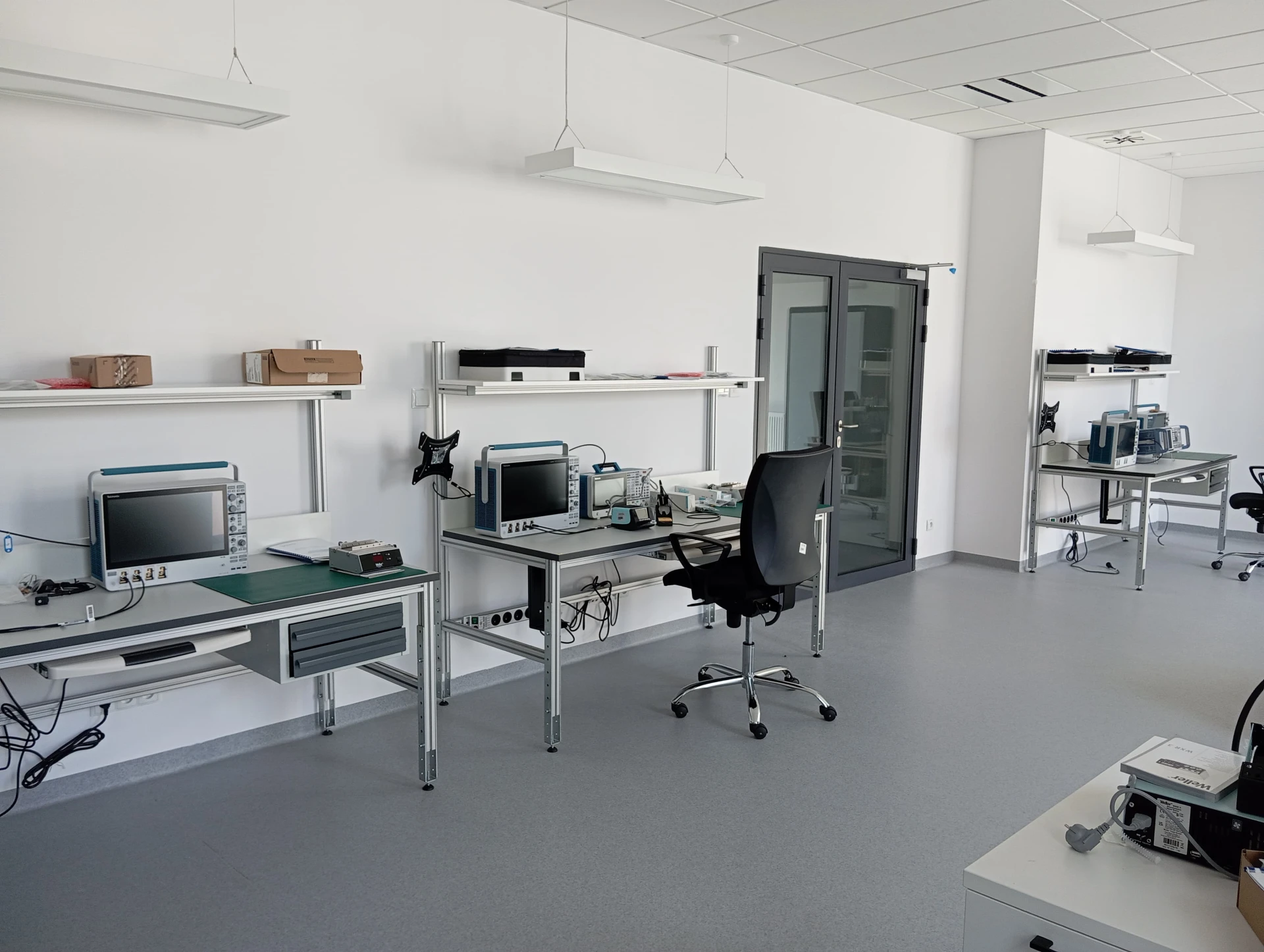
The Satellite Electronics and FPGA Systems Laboratory is equipped with the necessary tools for designing, integrating, launching, and testing advanced electronic systems for space and terrestrial applications. The laboratory includes:
- Tektronix oscilloscopes with bandwidths up to 10 GHz: MBO64B (4, 10 GHz) and MBO54B (1 GHz, 2x). They are equipped with spectrum analyzers, arbitrary signal generators, and power analyzers.
- Signal generators: arbitrary (AFG31252, 2x) and vector (R&S SMM100A). They enable the testing of systems operating at frequencies up to 44 GHz.
- SMD/BGA assembly and disassembly devices with precise positioning systems and controlled thermal profiles.
- Keyence microscope with magnification up to 1000x. It allows for detailed inspection of electronic systems.
The laboratory supports various manufacturers’ programming, simulation, and verification of FPGA arrays, offering full support for FPGA deployments in high-reliability projects.
Available software includes:
- Altium Designer for PCB design and visualization.
- Vivado and Vitis (Xilinx) for FPGA and embedded system design and simulation.
- Libero (Microsemi) for SoC and FPGA design and verification.
- Rivera Pro for advanced verification and simulation of FPGA systems.
Cleanroom for Assembly, Integration, and Testing of Satellite Systems and Subsystems
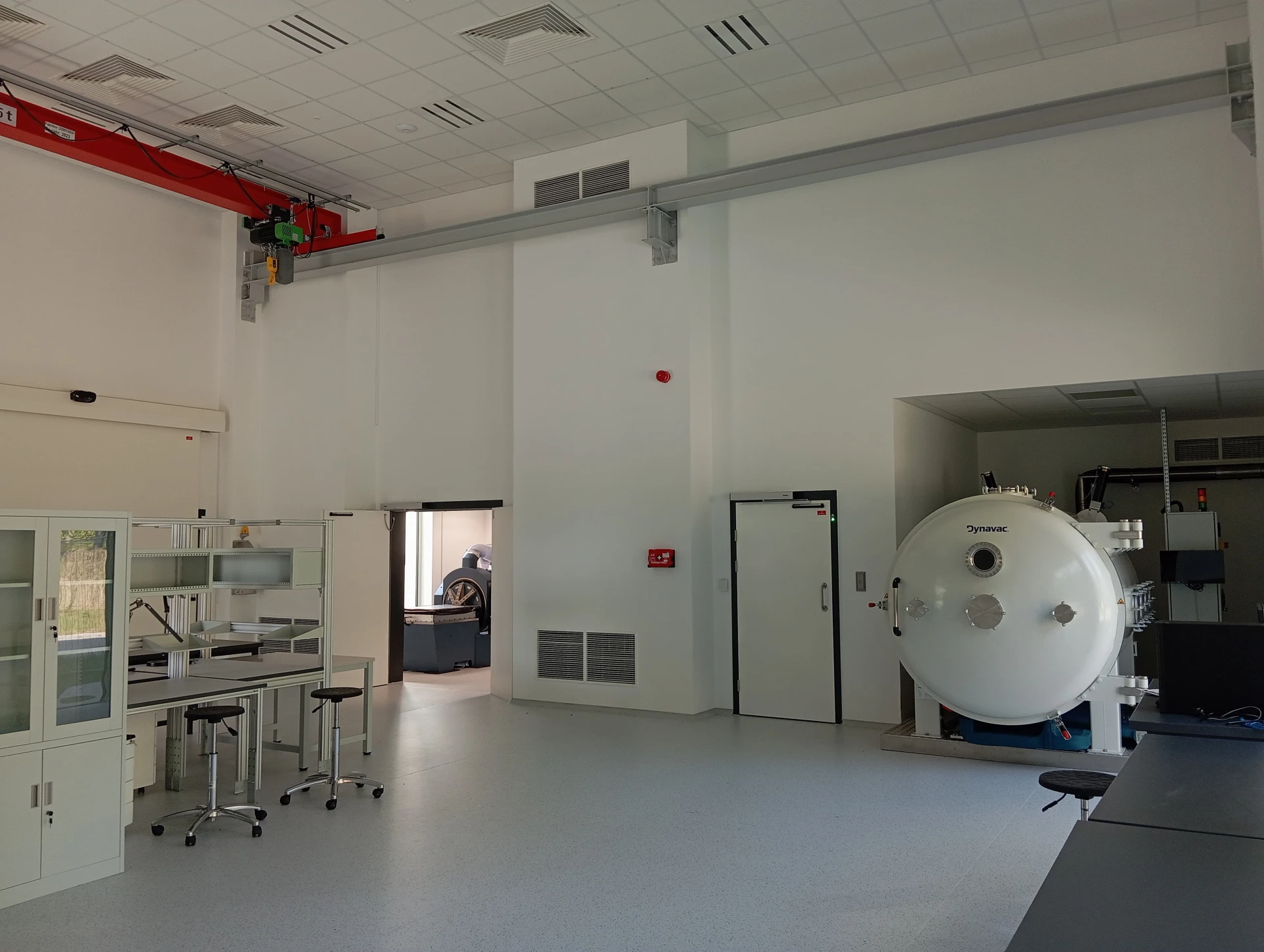
The Cleanroom, Integration, and Testing Laboratory provides an ISO 7 cleanroom environment essential for the assembly, integration, and testing of advanced electronic and mechanical systems. It is equipped with cutting-edge devices that enable testing and simulation in extreme environmental conditions, covering a wide range of applications – from space technologies to other advanced industries.
The laboratory includes:
- Upholtz shaker (35 kN) for testing resistance to vibrations and shocks.
- Weiss vacuum-thermal chamber (1.7 m diameter) simulating space conditions, including vacuum and extreme temperatures.
- The APFlayer electromagnetic compatibility (EMC) chamber. It is equipped with a sensitive receiver and a set of specialized antennas to test the electromagnetic compatibility of devices.
- Tempest measurement receiver for testing high-security devices.
- Orolia GSG-8 GNSS signal simulator with jamming and spoofing simulation capabilities.
- Rhode & Schwartz ZNA26 network analyzer with a built-in ZNA-K1 spectrum analyzer. It enables tests in the 10 MHz–26 GHz range.
The laboratory is also equipped with advanced software, including:
- Siemens NX CAD/CAM/CAE for mechanical system design and simulation.
- STK for space and drone mission analysis.
- ANSYS Mechanical and ANSYS HFSS for mechanical, thermal, and high-frequency analysis.
- ANSYS Discovery for early-stage design and simulation.
- Autodesk Inventor for 3D modelling and simulation of mechanical systems.
The laboratory offers a comprehensive range of tests and simulations in controlled environments, ensuring the highest precision and reliability for your projects.
Data Processing and Interpretation Center for Satellite Data and Civil Satellite Navigation Systems
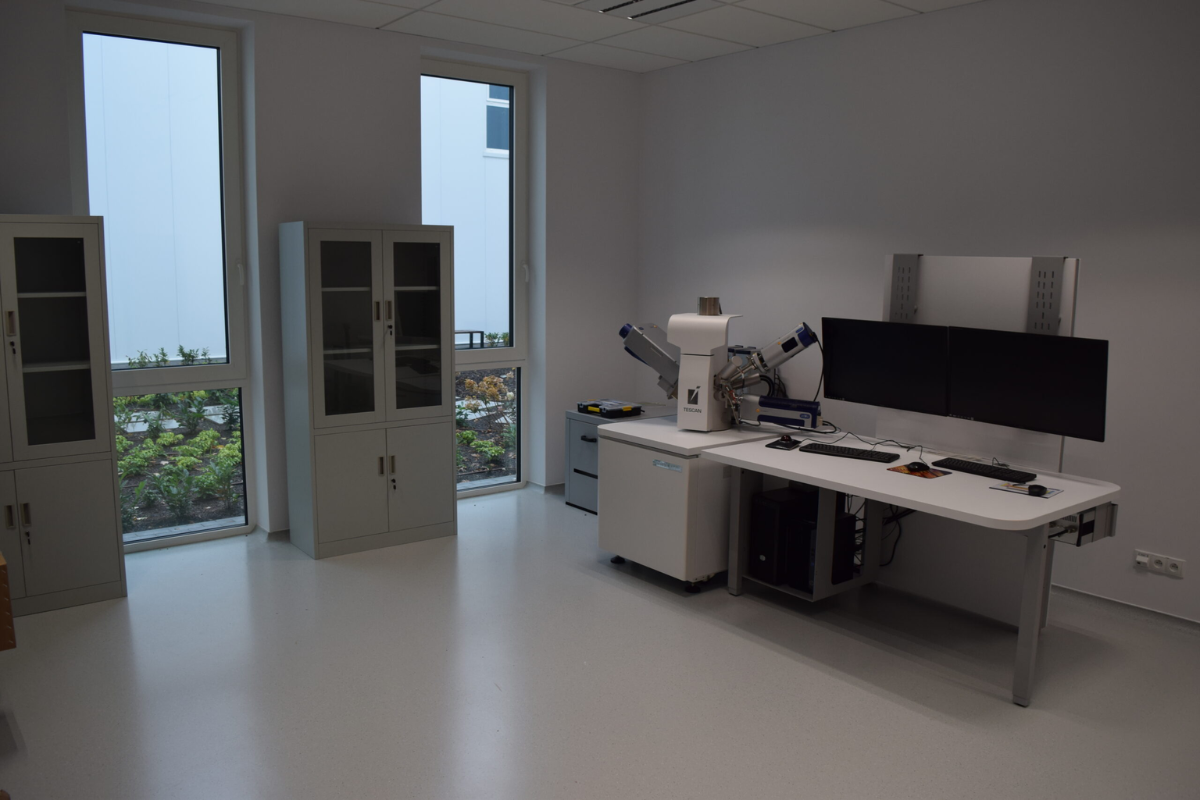
The Satellite Data Processing and Interpretation Center is equipped with advanced computer hardware and software that comprehensively process geospatial data from satellite, aerial, drone, and LiDAR imagery. The centre ensures fast processing of large volumes of images and visualization of results, allowing users to obtain precise geospatial information. The technologies used include optical, radar, and LiDAR domains.
The centre has a high-performance server and five workstations, providing the computational power to process and analyze large datasets. With integrated software, the centre supports the modelling, visualization, and analysis of spatial data in 2D and 3D formats.
Key software includes:
- ERDAS Apollo – allows server-side processing of geospatial data and real-time publication of results.
- ERDAS Imagine – consolidates remote sensing, photogrammetry, LiDAR analysis, radar processing, and artificial intelligence tools, offering comprehensive image and spatial data analysis.
- eCognition – an advanced image data processing tool based on object-oriented approaches, generating hierarchical object classes.
- ARC-GIS with CityViz module – a geographic information system for spatial data analysis, visualization, and reporting.
- Virtual City Suite – a 3D city modelling tool that enables the creation of digital city twins and urban analysis.
- LIMON – a tool for processing LiDAR data from point clouds, particularly from UAV measurements.
The centre also offers the ERDAS Apollo geoportal, which distributes processed geospatial data and provides quick access to analysis results and spatial models.
Robotics and Artificial Intelligence Systems Laboratory
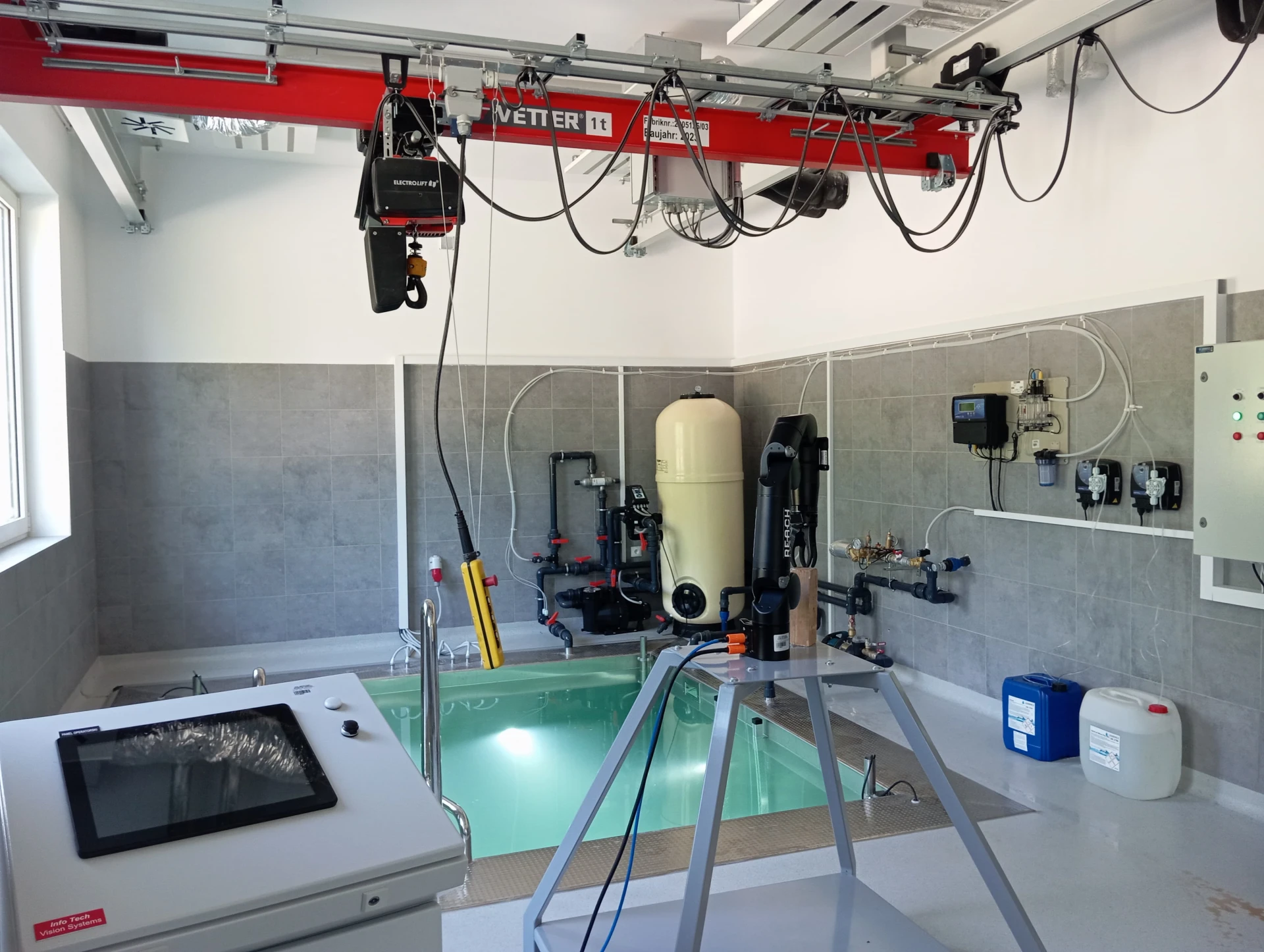
The Robotic Systems and Artificial Intelligence Laboratory is dedicated to the research and implementation of advanced control systems for satellite and planetary robots. Satellite manipulators are tested in a simulated zero-gravity environment provided by a 3 x 3 x 3 meter pool. The pool allows for precise testing of mobile manipulators in simulated weightlessness, and its automated water treatment system ensures high water clarity.
The laboratory is equipped with a localization system based on four high-resolution cameras that monitor the position of manipulators and mobile platforms. This system provides accurate measurements and data visualization necessary for the calibration and testing of control algorithms.
The laboratory uses the Bravo 7, a six-degree-of-freedom manipulator from Reach Robotics proven in underwater operations, to test satellite manipulators. The laboratory also prototypes robot control algorithms using the MicroLabBox system from dSpace, which integrates data from sensors and actuators.
The laboratory utilizes MATLAB software, which enables the prototyping and testing of artificial intelligence and robot control algorithms. With a wide range of toolboxes, MATLAB offers complete flexibility in modelling and simulating autonomous robots and satellite operations.
Cryptography and Cybersecurity Laboratory
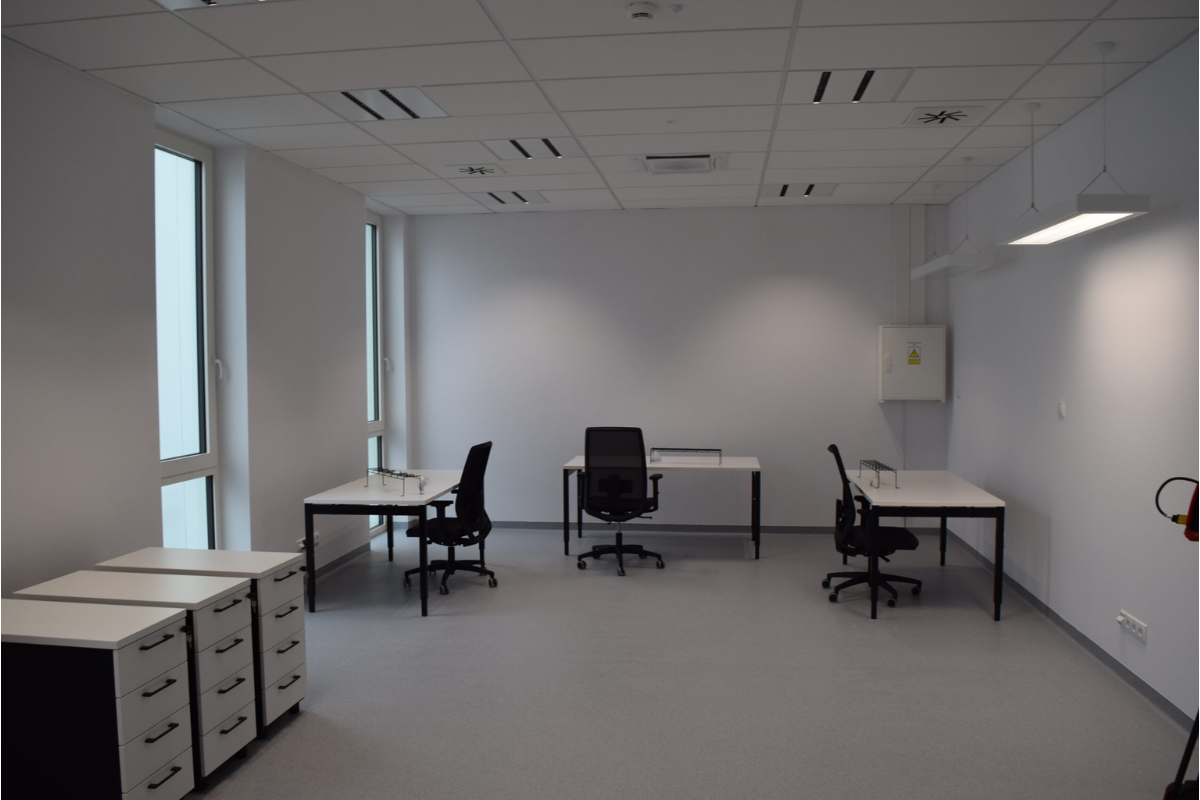
The Cryptography and Cybersecurity Laboratory focuses on researching and implementing technologies that secure data exchange and protect systems from cyberattacks. Given the widespread availability of the internet and the vast flow of information, the laboratory develops barriers that prevent unauthorized access and use of data. It also provides tools for securing electromagnetic signals (e.g., GNSS) from interference and corruption.
The laboratory is equipped with advanced systems, such as:
- Anti-jamming antenna system: Novatel’s CRPA antennas (GAJT 410 ML, GAJT 710 ML) and the GAJT AE device. It protects communication systems from external interference in civilian and military applications.
- Cybersecurity platform, which consists of five key elements:
- A threat detection system supported by machine learning, automating responses to cyber threats.
- A privileged access management system, securing access to IT resources, including physical and virtual machines, network equipment, and applications.
- Backup software that ensures secure data backups.
- A hyper-converged server platform for IT resource management.
- A hardware cryptographic module for data encryption and communication security.
The laboratory offers advanced tools to protect against signal interference and cyberattacks, with applications in both civilian and military sectors.
Space Medicine Laboratory
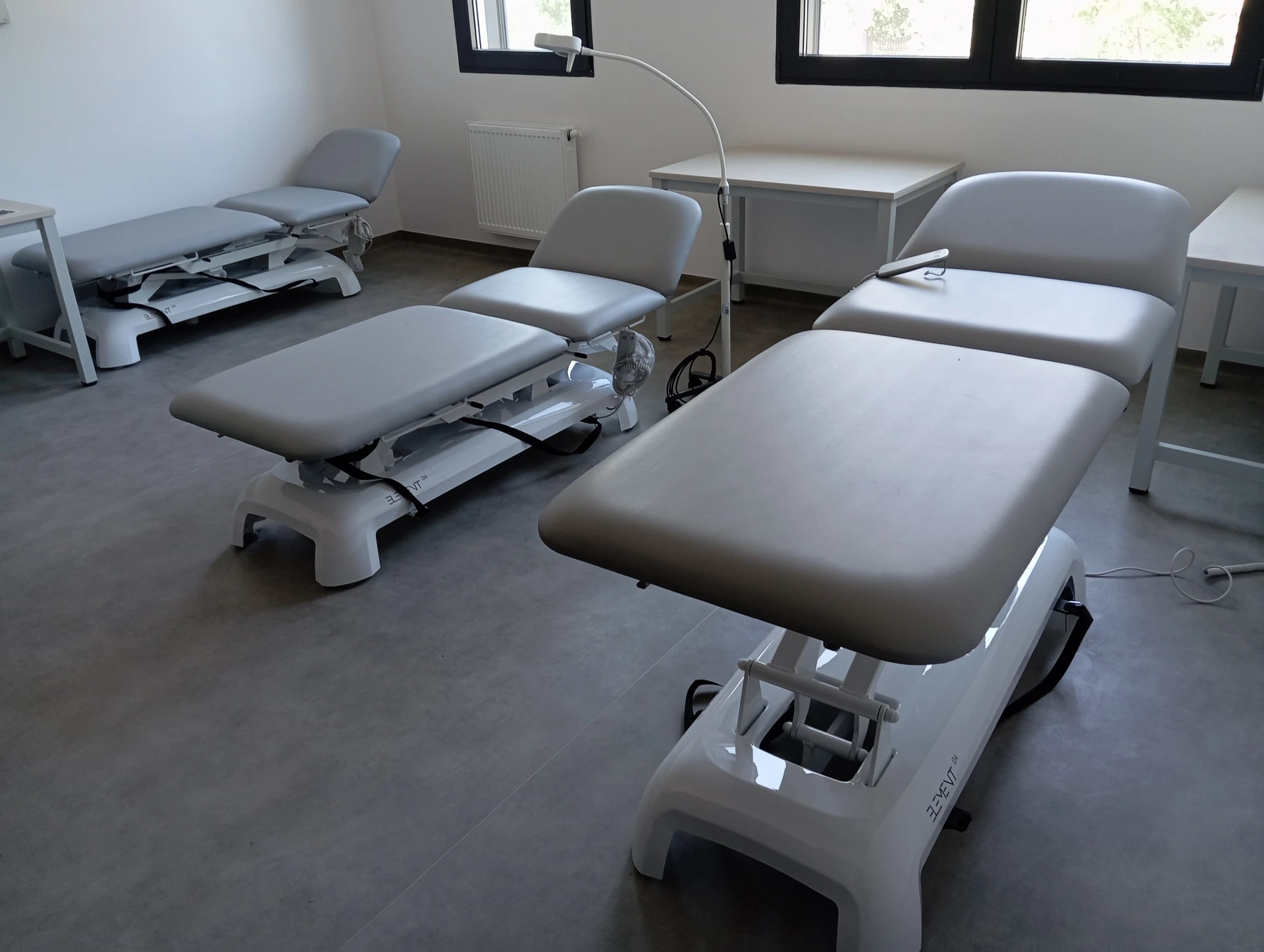
The Space Medicine Laboratory focuses on studying long-term isolation’s psychophysical and psychological effects, similar to those experienced during space missions. While it does not address physiology in microgravity conditions, the laboratory has advanced systems for monitoring vital signs, brain waves, body temperature, and cognitive functions, allowing for a detailed analysis of the impact of prolonged isolation and stress on the human body.
The laboratory is equipped with:
- The HR2000 vital signs monitoring system (BST). It allows for long-term recording of parameters such as blood pressure, heart rate, and EKG without restricting the subject’s mobility.
- EXG 32 EEG device (ELMIKO) for long-term monitoring and analysis of brain waves during sensory deprivation and stress-related studies.
- GTC 600 C thermal camera (Bosch) for precise body temperature measurements in the range from -20°C to +600°C.
- The Biopac MP-160 cognitive function monitoring system. It records data on eye movements, facial microexpressions, and other parameters related to cognitive activity.
The laboratory enables comprehensive studies of the effects of stressful conditions and long-term isolation on the human body, which is crucial for space missions and other extreme work environments.
Materials Engineering and Strength Testing Laboratory
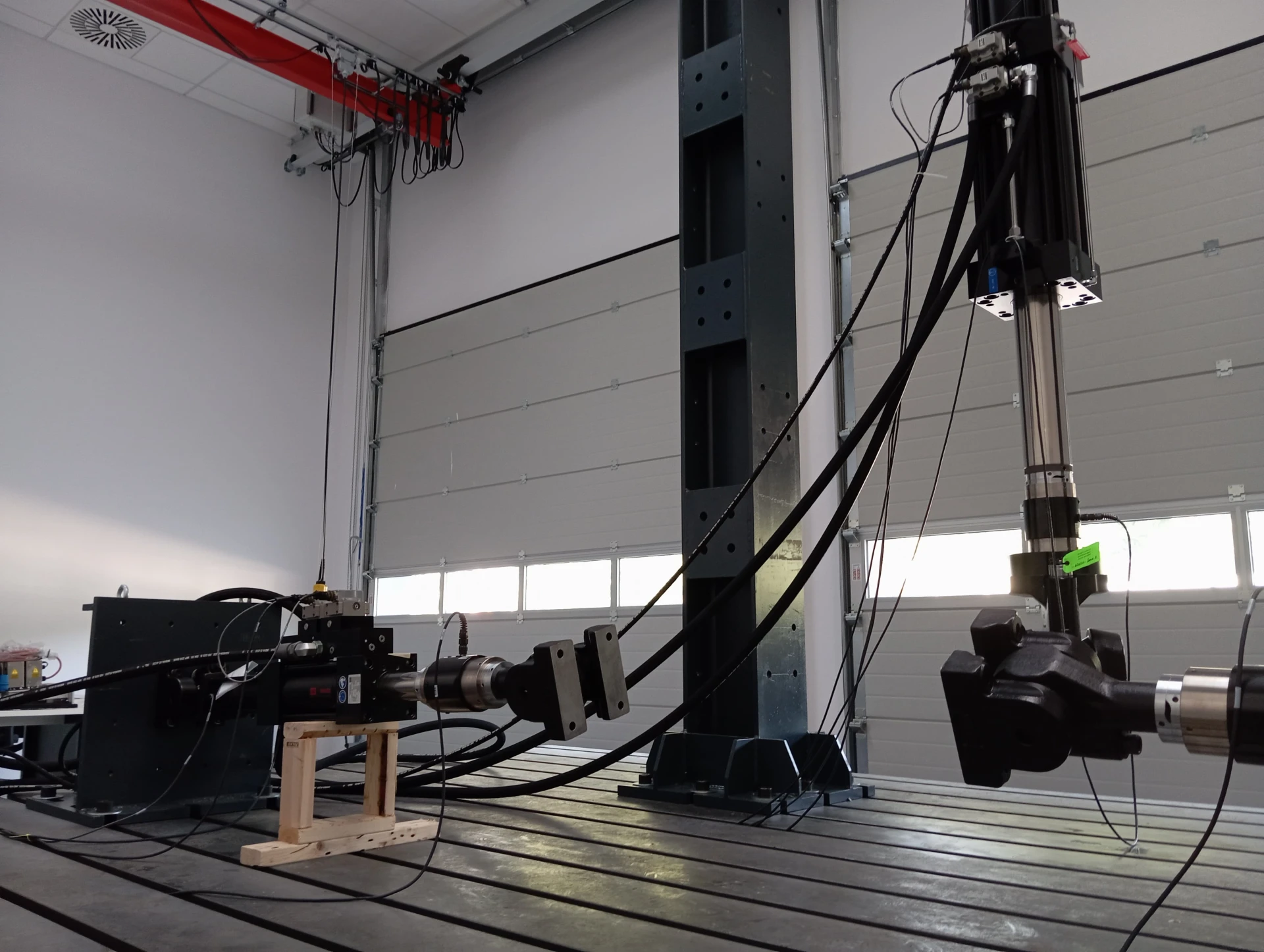
The Materials Engineering and Strength Testing Laboratory offers comprehensive research capabilities, including macro, meso, and micro-scale tests. The laboratory serves various clients, from the machinery and automotive industries to precision mechanics and space research. The equipment set allows for strength testing, material structure analysis, and testing for resistance to external factors such as corrosion.
The laboratory is equipped with:
- Strength testing system for static and dynamic tests with loads up to 500 kN, including a high-temperature furnace and a temperature chamber.
- Scanning electron microscope (SEM) with EDS X-ray microanalysis and EBSD analyzer for material composition and structure analysis.
- Keyence VHX-7000 portable optical microscope, offering magnification up to 1000x, for surface structure examination before and after treatment.
- Sample preparation kit (Mecatech SPI SPC DPC polisher and MECATOME T265 cutter by PRESI) for precise material sample testing.
- Salt spray chamber. It accelerates corrosion processes, allowing for testing material resistance to rust.
- SkyScan 1275 X-ray microtomograph by Bruker for observing structural defects in samples.
- Labortech impact hammer. It generates up to 450 J of energy and is used for testing energy absorption and material behaviour under thermal shock.
- A vibration testing kit and acoustic camera for detecting defects in rotating components such as bearings and engines.
The laboratory supports strength testing and materials engineering, enabling comprehensive tests from macroscopic loads to microscopic structural analysis.

